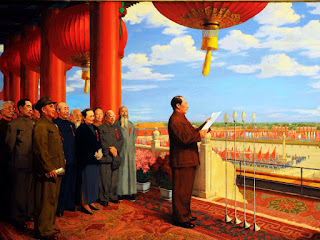Meet Genghis Khan, the Founder of the Mongol Empire
Genghis Khan (1162-1227), also called Borzhijin Tiemuzhen, was a brilliant politician, militarist, and Mongol empire founder. He rose to power in his middle ages, established the Mongol Empire in 1206, and claimed himself the emperor the same year. Later, Genghis Khan launched a series of wars of conquest, and he even went as far as to the central Asia and the short of the Black Sea. In 1227, Tiemuzhen caught ill on conquering the Western Xia Kingdom and died before the surrender of the conquest. He left the strategy of uniting the Southern Song dynasty and eradicating the Jin Kingdom first. Genghis Khan was buried in a mysterious place, and he was revered as the Yuan Taizu by his grandson Kublai Khan after the founding of the Yuan dynasty.
- Resume of Genghis Khan
Name: Borzhijin Tiemuzhen Title: Genghis Khan |
| Genghis Khan |
Nationality: Mongolian
Birthplace: north of the Mongolian grasslands
Birth and Death: May 31, 1162 - August 25, 1227
Occupation: politician, militarist, the emperor
Reigning years: 1206 - 1227
Major accomplishments: built the Mongol Empire and conquered Sulalah Khuwarazm Shah
- Early Years
Genghis Khan was born on May 31, 1162, and his father, the chieftain of his clan, was poisoned to death when he was nine. Genghis Khan and his fellowmen were forced to leave their homeland. At that time, all Mongolian tribes were under the control of the Jin kingdom, who was cruel. Therefore, little Tiemuzhen grew up full of hatred for the Jin rulers and the revenge for his father’s death.
- Rise to Power
A few Years of Happiness
The young Tiemuzhen established a strong friendship with a young man named Jamuka because their tribes lived close. They had a great time fishing, hunting, and horse riding together. Later, Tiemuzhen and Jamuka even swore to be alliance forever. This relationship proved to be very precious to Tiemuzhen. When he was 16, Tiemuzhen married Boertie, which was arranged by his father. The Mongolian customs required that the groom prepare a present with the same value of the bride’s dowry. But Tiemuzhen’s father died years ago. Togrul, the chieftain of the Kerait and the best friend of Tiemuzhen’s father, agreed to take Tiemuzhen in as his son. By far, Tiemuzhen had made alliances with Jamuka and Togrul. He had some good adolescent years. He might as live a happy life since then.
Tiemuzhen’s First Battle
However, an incident drove Tiemuzhen to the first battle in his life. One day, a group of Merkits (Tiemuzhen’s enemy) broke into Tiemuzhen’s house and took his newly wedded wife. Tiemuzhen himself was lucky to escape during the turmoil. He was forlorn and facing the life-long shame. He wanted to get back to the Merkits, but he was all alone. He sought help from his best friend Jamuka and foster father Togrul, who supported him unreservedly. The result was Tiemuzhen won his first military attack. He not only took his wife back but acquired tons of spoils.
Breakup with Jamuka
Tiemuzhen began to show his military intelligence while his clan grew. Several years later, he sought revenge for his enemy and conquered several tribes. Other unconquered tribes were terrified by Tiemuzhen’s power. They deliberately chose Jamuka, who was also a brilliant chieftain and had always considered Tiemuzhen his subordinate, to be the Guer Khan to fight against Tiemuzhen. By now, the friendship between Tiemuzhen and Jamuka began to go stale. In 1190, Tiemuzhen was elected to be the chief of his clan, Kiyan. A kinsman of Jamuka got killed during his ransacking of Kiyan’s livestock. Jamuka used it as an excuse and assembled over 30,000 men from thirteen tribes to attack Tiemuzhen’s tribe. The consequence was Tiemuzhen was defeated, and his men were brutally tortured to death by Jamuka, which triggered the compensation of the Mongolian people. Tiemuzhen licked his wounds and continued to fight against Jamuka, and finally, he succeeded. The dozens of tribes once belonged to Jamuka also pledged allegiance to Tiemuzhen.
Breakup with Togrul
As Tiemuzhen grew ever powerful, his adoptive father became uneasy that Tiemuzhen’s marriage proposals between his children and his adoptive father's grandchildren were rudely objected. Now Tiemuzhen was well aware that his relationship with his adoptive father would go bad. Not surprisingly, they did become enemies later, and war broke between them. Tiemuzhen faced an epic defeat, with only 19 men around. He swore to take back his power, and in 1203, he destroyed Togrul’s army and unified the old tribes controlled by Togrul. By now, Tiemuzhen had controlled most of the Mongolian tribes and occupied the eastern hulunbuir grassland. Only a few clans were left to be wiped out and proved to be incompetent compared to the powerful Tiemuzhen.
- Establishment of the Mongol Empire
In the spring of 1206, the Mongolian aristocrats held a meeting and agreed to revere Tiemuzhen with the title “Genghis Khan." Thereby, the Mongol Empire was built, and Tiemuzhen was the emperor. To better rule the empire, Genghis Khan issued the Code of Genghis Khan, the first set of written code that has the widest applications in the world, and a republic system based on aristocratic democracy.
 |
| Statue of Genghis Khan |
- Further Conquest
Conquer Khwarizmi
In 1218, Genghis Khan sent an army to eliminate the Western Liao army, clearing the road to the Khwarizmi. A year later, a chieftain of Khwarizmi court murdered 499 merchants from the Mongol Empire. The king of Khwarizmi arbitrarily killed the ambassador sent by Genghis Khan, which infuriated Genghis Khan so much that he led 200,000 soldiers to attack Khwarizmi. In 1223, most soils of Khwarizmi were taken by the Mongol Empire, and the king was driven to the Caspian Sea and died there. Genghis Khan returned.
Conquer the Western Xia Kingdom
In 1226, Genghis Khan led an army of 100,000 men and annihilated the principal force of Western Xia Kingdom. Only a year later, the Western Xia Kingdom perished.
Defeat Jin Kingdom
In 1211, Genghis Khan personally led an army to invade the Jin Kingdom, starting a 24-year-long war between the Mongol Empire and the Jin Kingdom. The conquest went well. The territory of the Mongol Empire extended significantly. In 1214, the Jin Kingdom was forced to make peace with the Mongol Empire and offered many treasures and their princess to Genghis Khan. In June of the same year, Genghis Khan took the excuse of Jin rulers broke the promise by moving their capital to Kaifeng and attacked the Jin soil again. This time, Jin Kingdom was facing the epic defeat. In 1217, Genghis Khan decided that the Jin Kingdom's conquest to be continued by Muqali, one of his best generals, and he would prepare for the Western expedition. Until 1227, Genghis Khan was able to resume his command of fighting against the Jin army. However, during his match to Qingshui county (today’s Gansu province), Genghis Khan died, leaving the strategy of uniting the Southern Song court and conquering the Jin kingdom.
- Genghis Khan Mausoleum
After Genghis Khan died, his offspring gave him an unusual funeral. There is no tangible mausoleum left. So, there is no way to decide where he was buried. There is only a cenotaph built for him in Erdos, which is the only sight themed with Genghis Khan.
- Achievements
Building the Mongol Empire and Issuing Law Code
It was Genghis Khan who unified all the Mongolian tribes and built the Mongol Empire. Before the unification, there was no writing character in Mongol tribes. When Genghis Khan became the emperor, he captured a Uighur man named Tatatonge, who could write. He asked the Uighur to teach his princess to write. Since then, the Mongol empire had its writing system. Later, Qingce, a kind of code, was compiled under Genghis Khan’s order, which became the beginning of the Mongolian code of law. Several years later, he ordered the Code of Genghis Khan, the first Mongolian code of law, to be built, stipulating the rules, regulations, and customs. The code became the criterion of Mongolian rulers later.
Military Conquests
Genghis Khan is best-known for his iron fist conquering other nations like Jin Kingdom, Western Xia Dynasty, and Khwarezm.
Enfeoffment
The first thing Genghis Khan did after he unified the Mongolian tribes were to bestow all the generals, families, and kinsmen with powers and treasures, which bettered and systematized the System of Qianhu (thousand households) that was already in existence. He divided his subjects into 95 sections and appointed a lot of ministers to govern these sections. Genghis Khan also built a standing army to consolidate his reign.
Free Religion Policy
In the vast Mongol Empire, there were a lot of religions. Instead of coercing people to one particular one, Genghis Khan allowed people to freely choose their belief and gave tax exemption to religious people.
- You may want to know
1. How much land did Genghis Khan conquer?
Genghis Khan conquered approximately 10 million square kilometers. After he established the Mongol Empire, Genghis Khan didn’t start conquering right away. He only forced the Western Xia Dynasty to pledge allegiance. The Mongol Empire paid tributes to the Jin Kingdom until 1211 when Genghis Khan decided to attack and encroach Jin soil. By 1227, the Jin territory north to the Yellow River was taken by the Mongol Empire. At the same time, Genghis Khan made expeditions to the Khwarizmi. On his way there, Genghis Khan perished the Western Liao kingdom. To pursue the fugitive Khwarizmi king and the prince, Genghis Khan’s army went reached as far as north of the Caspian Sea. Later, he made conquest to the Western Xia, which surrendered only three days after his death. Therefore, the Mongol Empire was already very huge during Genghis Khan’s reign, but it’s still smaller than that of Mongke's age. It covered northern China, the People’s Republic of Mongolia, Central Asia, and parts of Afghanistan, India, Pakistan, and Iran, with an estimated area of 10 million sq.km.
 |
| Map of Mongol Empire (1206 - 1227) |
2. Is Genghis Khan Chinese?
Yes, Genghis Khan is Chinese. There are over 5 million Mongolians in China, and they are all considered Chinese. The Chinese constitution regards China as a multinational country, which means that the minority groups' history is also part of Chinese history. Therefore, the empire built by the ancestors of the Mongolians was also part of the Chinese empire.
3.Did Mongols eat humans?
Yes, only when things were terrible, and there was absolutely nothing to eat. They mostly had meats like mutton, deer meat, fish, and even bobac, edible wild herbs, and drinks like mare's milk and cow’s milk.
4.How many people are the decadents of Genghis Khan?
About 17 million people are the decadents of Genghis Khan, accounting for about 0.5% of the whole population. During the conquest, Genghis Khan was offered a lot of women. It’s said that he had over 500 women, including his Mongolian principal wife.
5.Was Genghis Khan ever defeated?
Yes, Genghis Khan was defeated twice in his life. The first time was when he was facing his best friend Jamuka’s 13 tribes. The second time was during the Battle of Parawan, 30,000 Mongolian soldiers were killed by Khwarezm prince Jalalad and his army.



Comments
Post a Comment